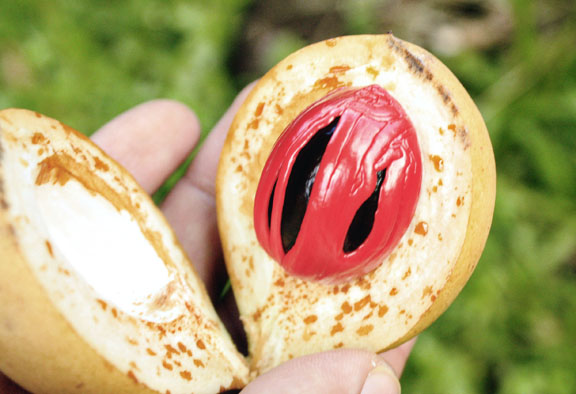

I’ve been trying to incorporate more local Grenadian ingredients in my cooking, so I was thrilled to discover tamarind trees on one of my visits to the beach. I happened to be walking through a grove of trees when I saw piles of brown, roundish pods littering the sand below. Upon closer inspection, I realized the pods were actually tamarind pods and confirmed this by cracking open their dry, brittle pods to find the sticky, flesh-covered seeds of the tamarind inside.

The fruit of the tamarind is edible, but can be quite tart, so it’s usually cooked or added as flavoring to dishes. In Grenada, they like to mix the flesh with sugar to make tamarind candies, but you’ll also find it used to make juice and to flavor stews.
The tamarind tree can also be found in Southeast Asia, so you’ll see it in a lot of southeast Asian dishes, like pad thai or Vietnamese canh chua (sour soup). Today, I’ll be showing you how to extract the pulp from the tamarind pods to make tamarind paste and a deliciously refreshing tamarind juice!

The flesh of the tamarind tastes best (and is the sweetest) when the pod is fully ripe. You can determine if the pod is ripe if the shell is dry and brittle to the touch. It should crack easily in your fingers. Simply crack the pod in half and pull out the seeds and flesh.

I didn’t collect nearly as many tamarind pods as I needed to make a lot of paste, so I went ahead and purchased about a pound of fresh tamarind from the market in St. George’s. The tamarind here has been de-shelled, but still contains all the seeds. You can also find dried tamarind paste, as well as whole tamarind pods (sometimes in boxes, sometimes loose), at Asian grocery stores in the States.

To remove the seeds, add about 2 cups of water to your fresh tamarind paste. (If working with dried tamarind paste from the grocery store, use hot water instead.)

Mix it around to fully incorporate the water. It should start becoming a thick, gooey mixture. Let it sit in the water for about 15 minutes.

Using gloves, grab a handful of the mixture (seeds, pulp, water, and all), and in a separate bowl, slowly squeeze to separate the paste from the seeds.

The seeds will still have a bit of pulp left on them, so I throw them into another bowl filled with water to continue soaking. This water can later be added to your juice.

Continue the squeezing process until all the seeds have been extracted and you’re left with a whole bowl of pure tamarind paste.

Strain the seeds from the water and reserve the water to add to juice. Discard seeds.


At this point, the tamarind paste can be refrigerated and added to different recipes. It should last in the fridge for a few weeks, or can be frozen for several months. Freeze in an ice cube tray to help portion the paste*! You can then defrost as much as you need for recipes like pad thai and canh chua. Or you can use the tamarind paste right away to make tamarind juice.
Tamarind Juice
10 servings
1 cup tamarind paste
6 cups hot water
1/2 cup sugar (or honey)
ice
1. Dissolve the sugar (or honey) in the hot water.
2. Stir in the tamarind paste.
3. Serve over ice. Add more sugar as needed. Enjoy!

*Update – You can also make tamarind chicken with all that leftover tamarind paste.


































Connect with us